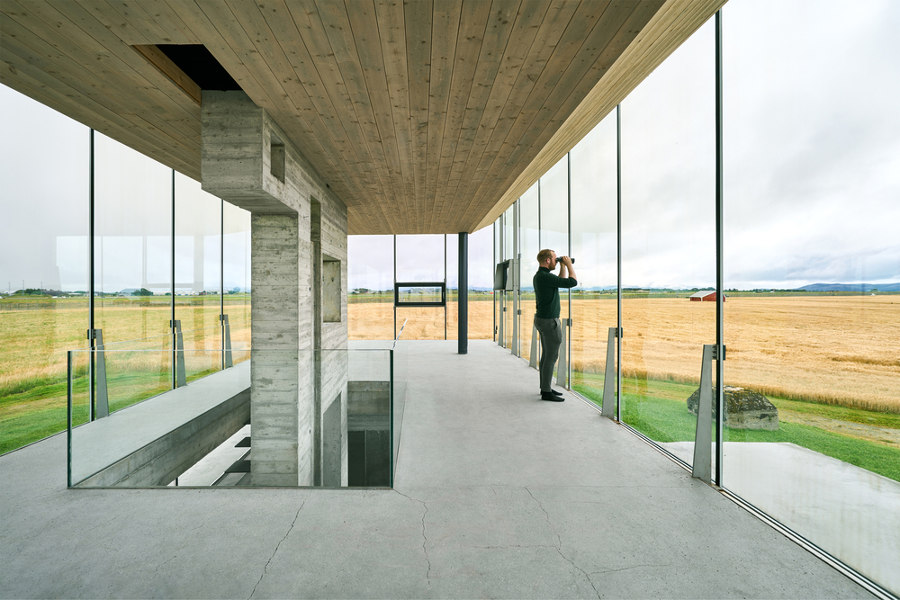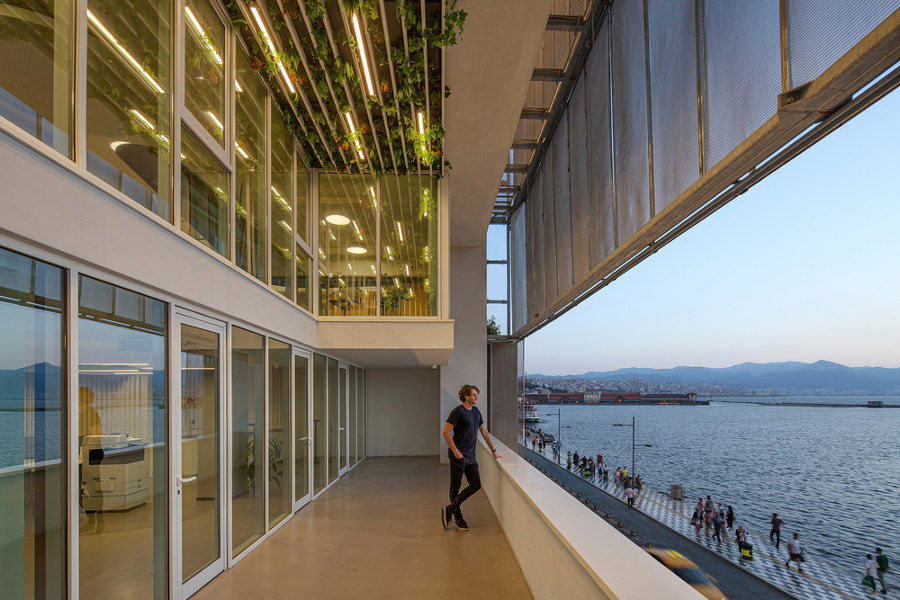Time to make a change: when adaptive reuse begets positive transformation
Text by James Wormald
03.07.23
By reminding us of the circularity of architecture, adaptive reuse allows old, forgotten follies to serve local communities, and rise from the ashes of their damaged past.
The Pavilion Breksted brings attention back to an old bunker in Norway, by positioning a glass frame above its entrance. Photo: Kristoffer Wittrup

The Pavilion Breksted brings attention back to an old bunker in Norway, by positioning a glass frame above its entrance. Photo: Kristoffer Wittrup
×When you’ve made a mess, it’s often easier to hold up your hands and start again from scratch. But while it might be a harder way to do it, adaptive reuse – when architecture takes something old and broken and brings it back to life – can have benefits all round. When planning much-needed social and cultural buildings for public use, instead of using new, virgin materials (or even recycled materials that need to be collected, stripped, reformatted and transported), there are plenty of pre-made sites already in place. All we have to do is see them. These adaptive reuse projects take disused buildings, forgotten projects and unloved environments and transform them into something new, bringing life, positivity and purpose.
kHaus connects Basel residents to the river Rhein (top) and its public spaces (middle, bottom) while giving them ‘poly-typology’ to flexibly adapt to any use. Present or future. Photos: Adrià Goula

kHaus connects Basel residents to the river Rhein (top) and its public spaces (middle, bottom) while giving them ‘poly-typology’ to flexibly adapt to any use. Present or future. Photos: Adrià Goula
×kHaus Cultural Center in Basel, Switzerland, by Focketyn Del Rio Studio
Despite the proximity of the Basel military barracks to the heart of the city, the Swiss army’s training complex remained closed off from the general public for 150 years. And, although many of the site’s smaller buildings have been updated and transformed into a cherished social and cultural hub since the Swiss army moved out in 1966, the Kaserne’s – as it’s now known – main building was always overlooked.
The renovation not only allows an old building to be used again today, but ensures its use tomorrow, too
Finally, after a nine-year journey starting with an international design competition and culminating in two of the most iconic public spaces in Basel – the river Rhein and the Kaserne courtyard – linking up and becoming accessible for the first time. By keeping its interior spaces flexible, meanwhile, kHaus’ rooms’ ‘poly-typology’, as architects Focketyn Del Rio Studio puts it, the renovation not only allows an old building to be used again today, but ensures its use tomorrow, too.
Landmarking the previously hidden site, Pavilion Breksted brings panoramic views of the landscape to its mixed-users and invites light to pour into the underground space. Photos: Kristoffer Wittrup

Landmarking the previously hidden site, Pavilion Breksted brings panoramic views of the landscape to its mixed-users and invites light to pour into the underground space. Photos: Kristoffer Wittrup
×Pavilion Brekstad in Brekstad, Norway, by ASAS arkitektur
Also turning defence and attack into respect and appreciation, the Pavilion Brekstad sits proudly atop the site of a disused bunker on the Fosen peninsula in Norway. In a juxtaposition of its previous role to hide people away from danger, the new multi-use pavilion space instead exposes itself to celebrate its stunning surroundings, sandwiched in between the Norwegian Sea and the picturesque Trondheimsfjord.
Epitomising the client’s brief ‘to see and be seen’, the pavilion uses glass walls to give a 360-degree view of local nature and wildlife. But it’s not all happening above the surface, the original ‘bunker’s heavy and massive character is preserved, with its concrete walls and texture visible,’ explain project architects ASAS arkitektur, while natural light is able to stream through the above-ground structure and brighten the underground space.
El Roser Social Center breaks down barriers rather than adds new ones at the ex-prison, including replacing its surrounding wall with an open courtyard (bottom). Photos: Adrià Goula

El Roser Social Center breaks down barriers rather than adds new ones at the ex-prison, including replacing its surrounding wall with an open courtyard (bottom). Photos: Adrià Goula
×El Roser Social Center in Reus, Spain, by Josep Ferrando Architecture + Gallego Arquitectura
As a former prison, the Roser Social Centre used to assist society by removing and reforming the city’s most deserving criminals. After a prison, the building was transformed first into a school – what’s the difference? Some might ask. Now, however, the facility offers assistance to the city’s least fortunate as an innovative programme, comprising 'a shelter for the homeless, a soup kitchen and a community space, bringing together all the social services of the city, making it the first comprehensive facility of its kind.’ Explain architects Josep Ferrando Architecture and Gallego Arquitectura.
There are plenty of pre-made sites already in place. All we have to do is see them
Changing from a harsh, segregated environment to a more open and welcoming one, ‘the geometry of the H-shaped floor plan’ adds two new courtyards and ‘a Palladian-style permeability marks the end of closed spaces,’ explain the architects, while the prison yard is transformed into an open, public space with the elimination of the surrounding wall.
Taking advantage of its stunning location, the IzQ building opens up a kinetic facade for all to enjoy the view from its balconies, amphitheatre and front steps. Photos: Zeren Yasa & Mehmet Yasa

Taking advantage of its stunning location, the IzQ building opens up a kinetic facade for all to enjoy the view from its balconies, amphitheatre and front steps. Photos: Zeren Yasa & Mehmet Yasa
×IzQ Innovation Center in izmir, Turkey, by Ofisvesaire
In its former life as an administration centre for the Izmir Chamber of Commerce, the IzQ building may not have literally locked anyone up inside, but its luxurious location overlooking a crescent bay off Turkey’s Aegean coast would previously have seemed a lot like a prison – chaining desk-jockeys up to their workspaces behind an obscuring facade, intended to protect them from the sun. ‘The use of a kinetic facade, a responsive roof and an amphitheatre-like space at ground level facing the seafront,’ explain architects Ofisvesaire, however, ‘create a sense of visual and tactile awareness of the sunlight, the sea air and the breathtaking views.
Pioneering the introduction, adoption and application of innovation, the building creates a sense of togetherness by strategically ordering ‘varying levels of visual and physical permeability,’ state Ofisvesaire, playing a ‘transformative role in the lives of its diverse users with a stronger dialogue established between the user, the sea and the city.’
© Architonic
Head to the Architonic Magazine for more insights on the latest products, trends and practices in architecture and design.




















